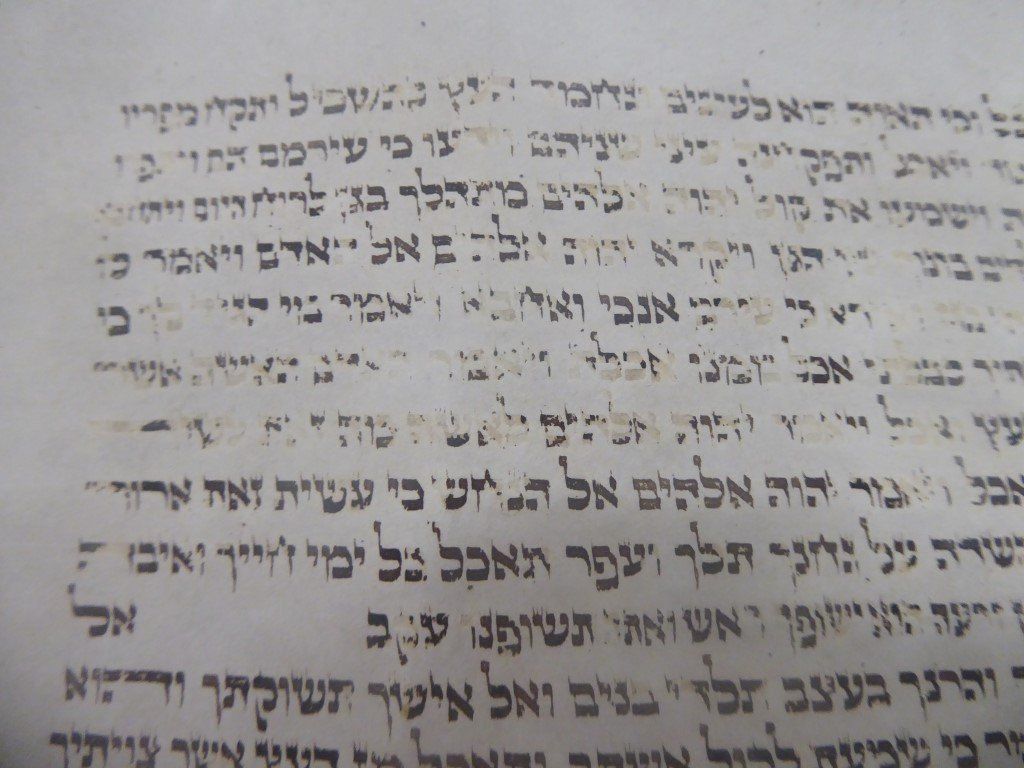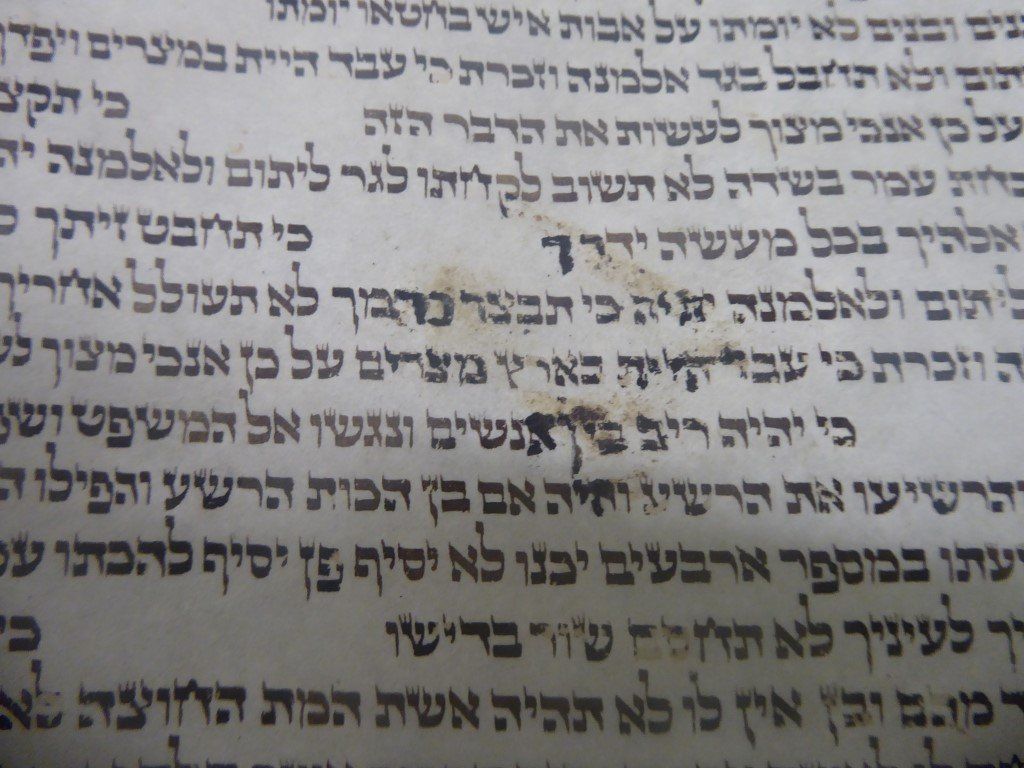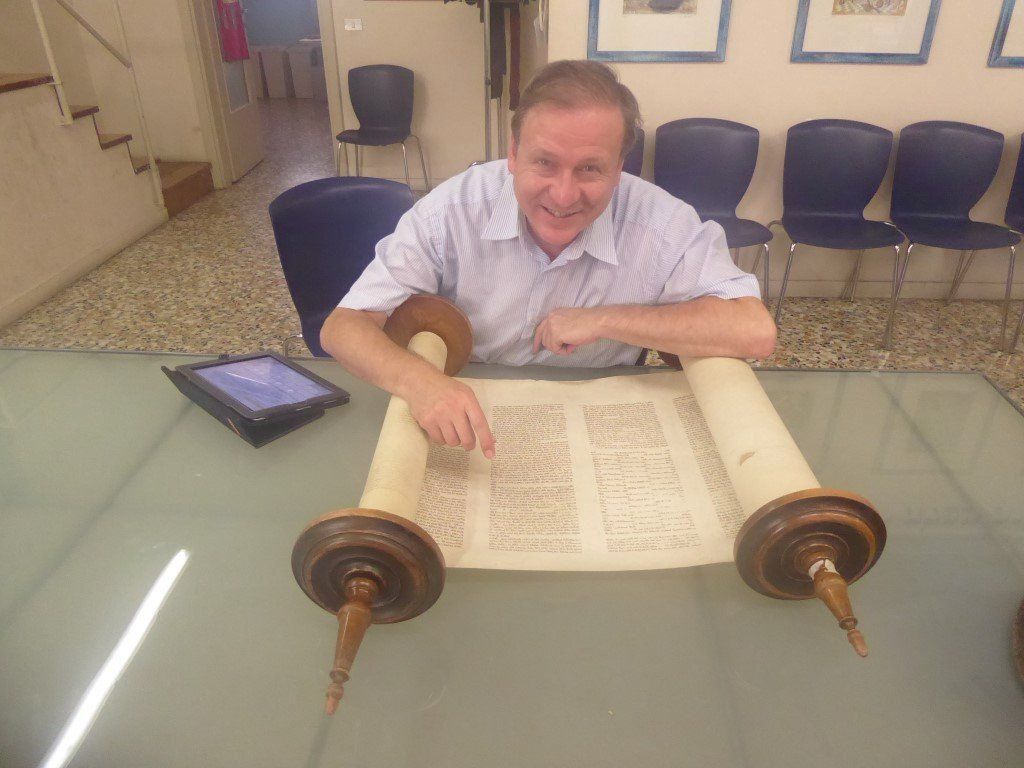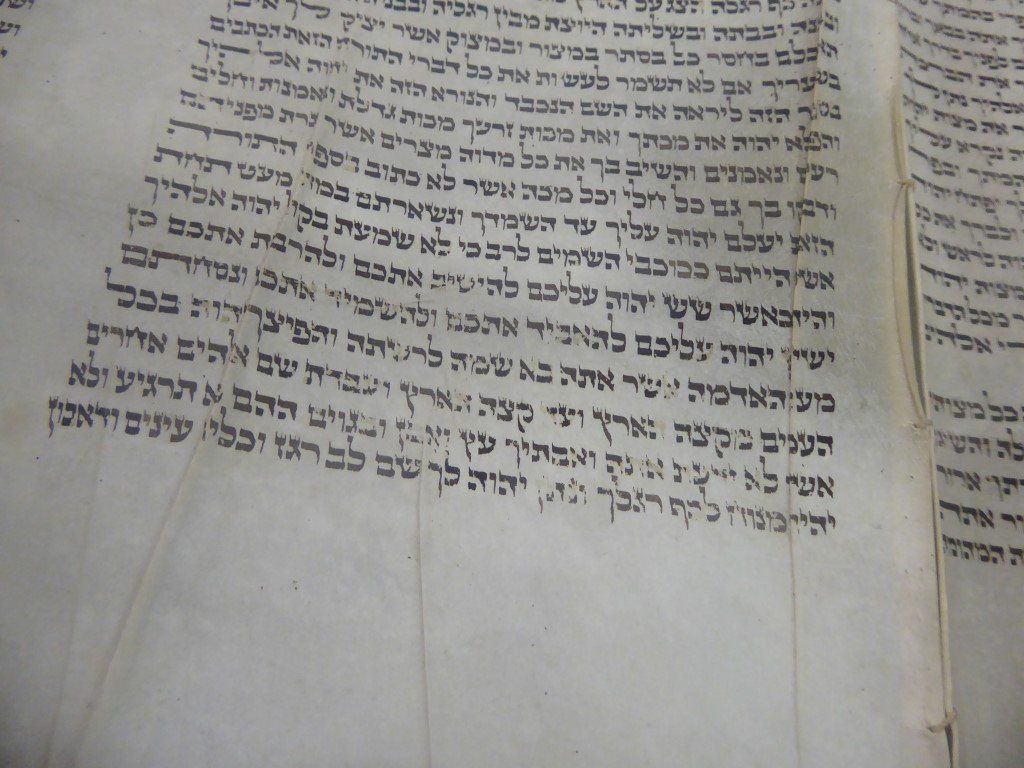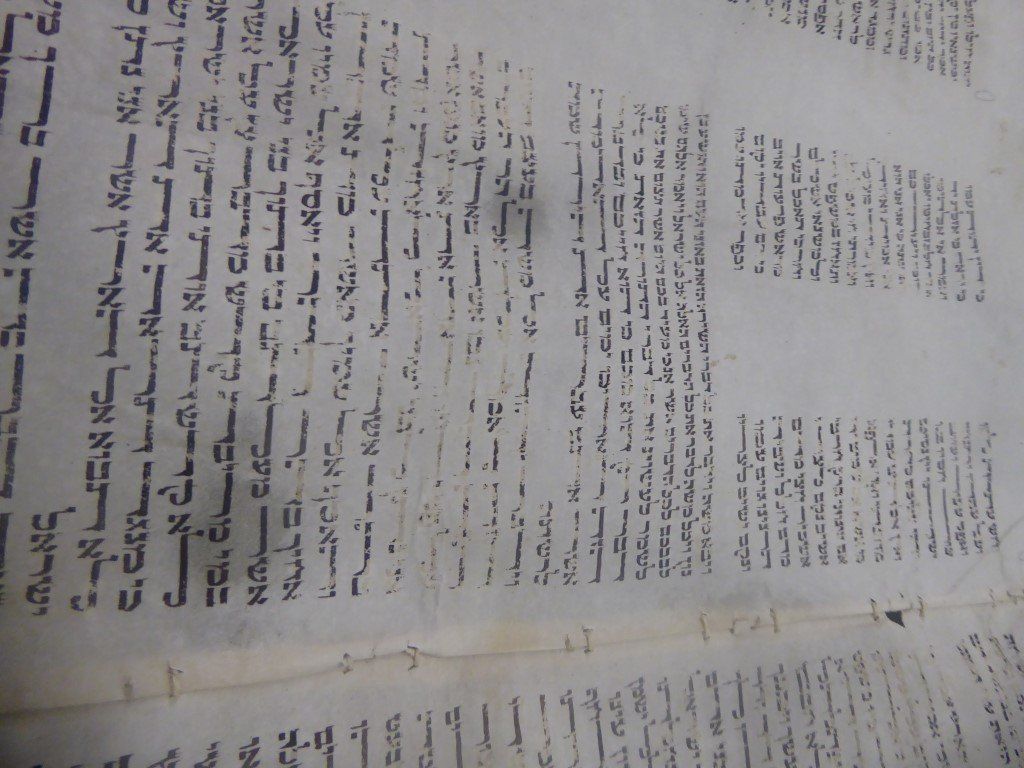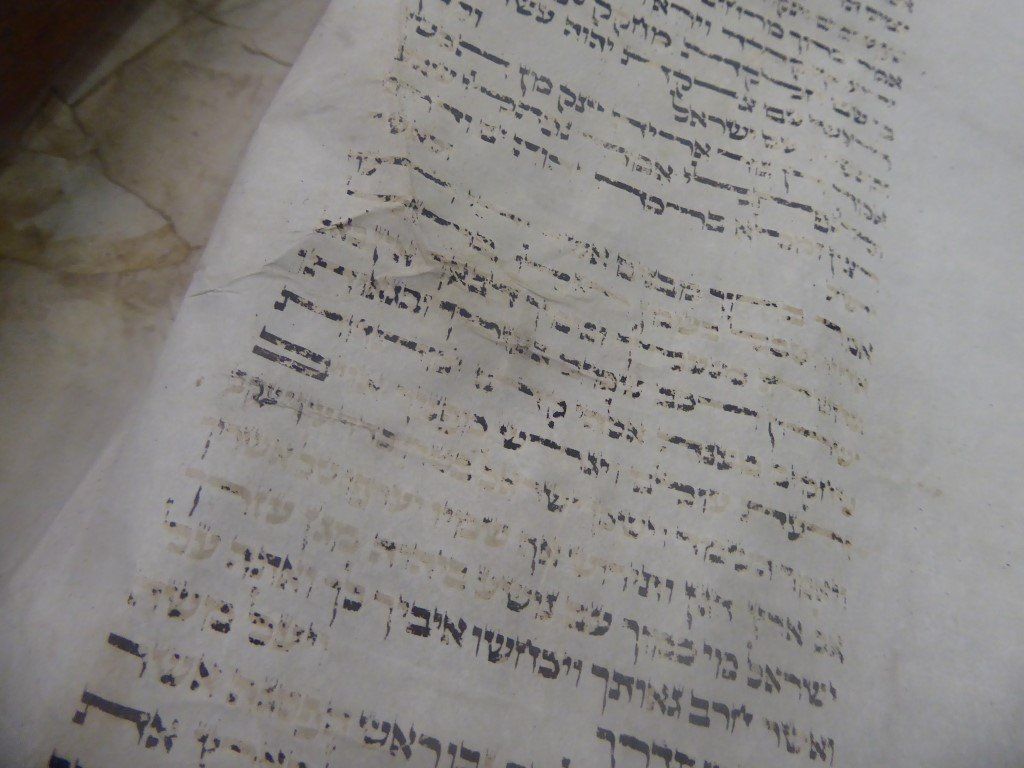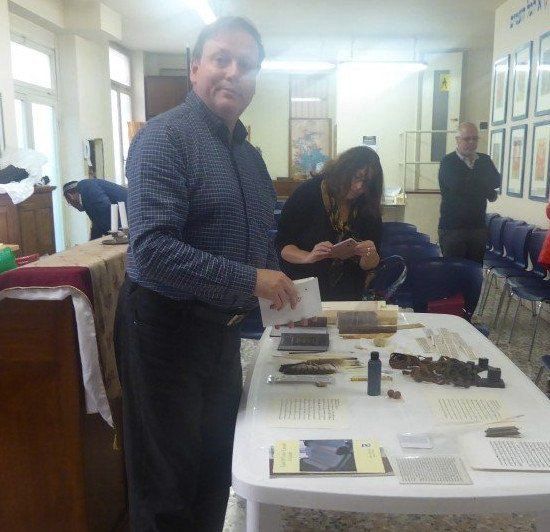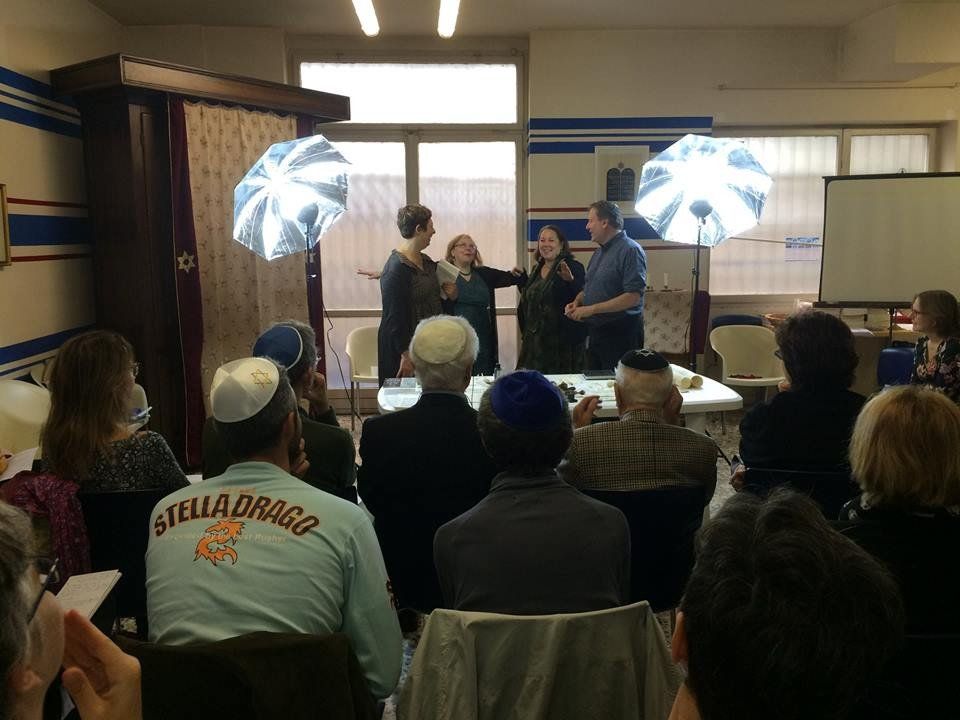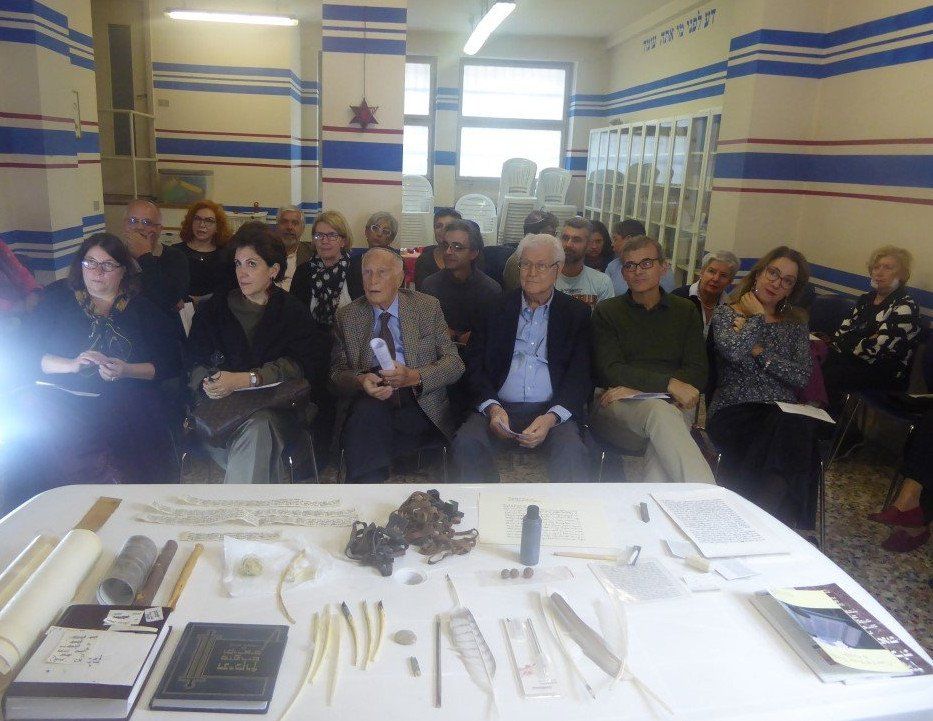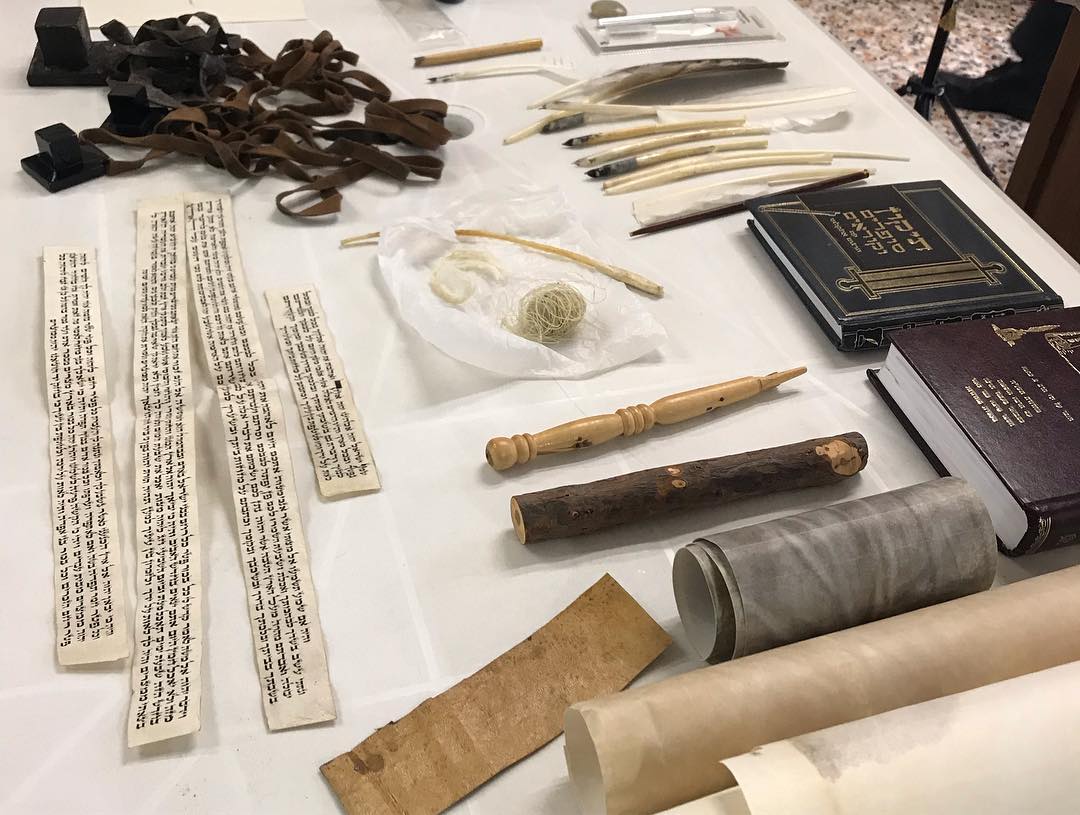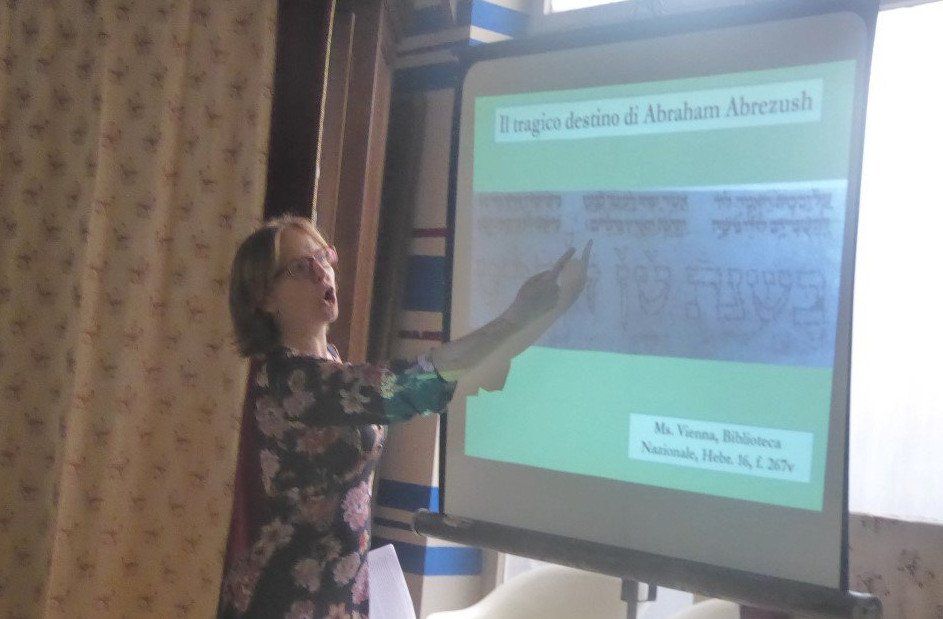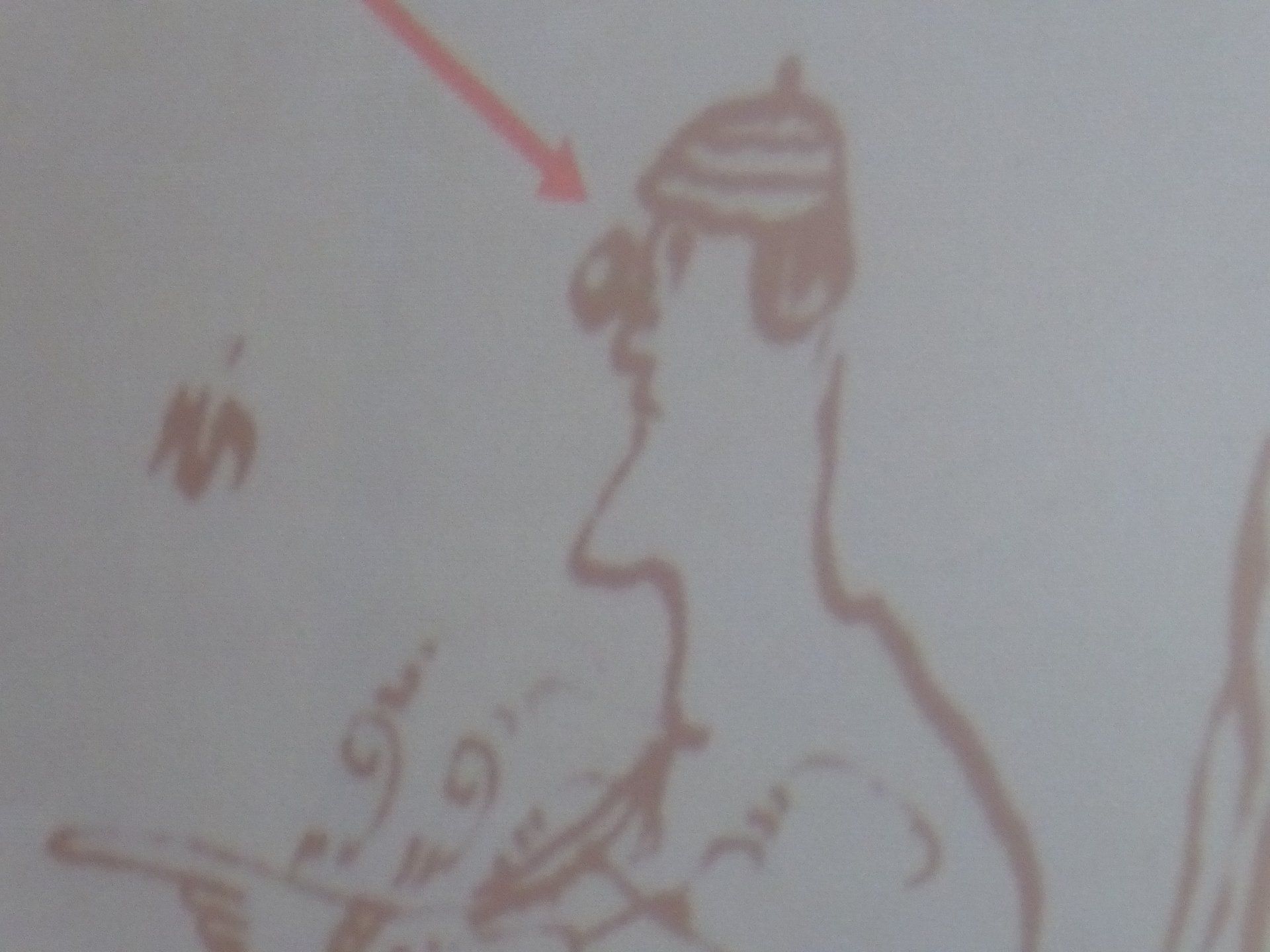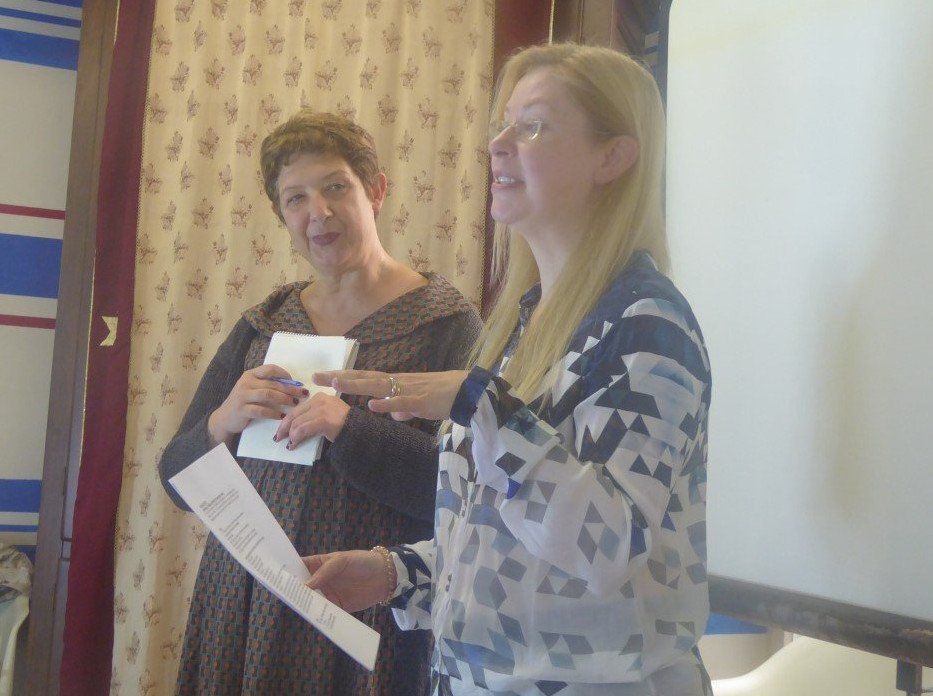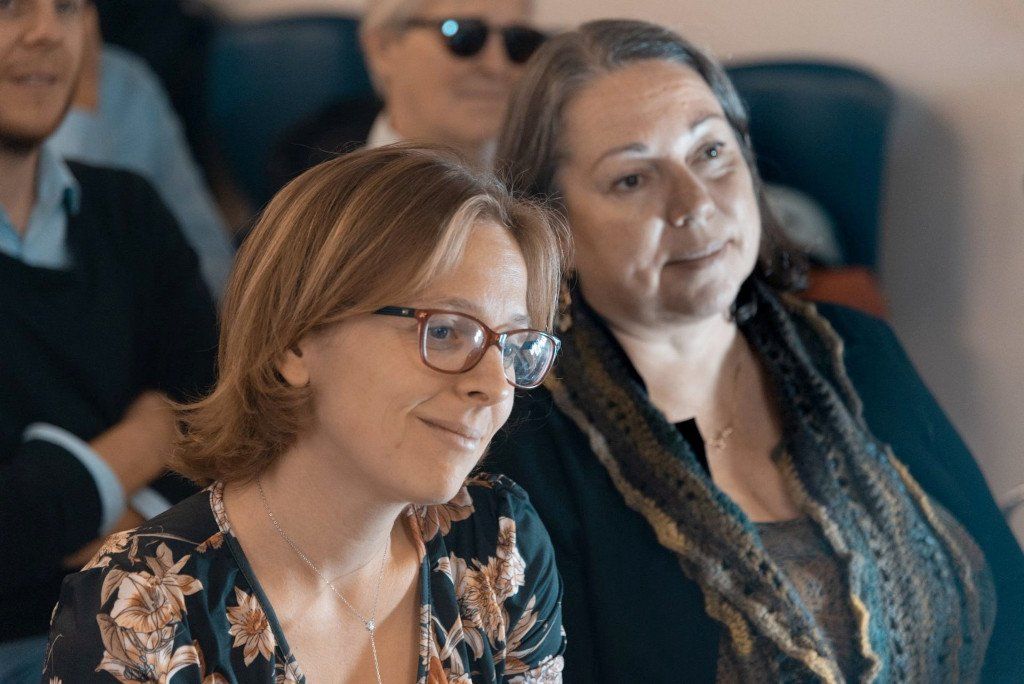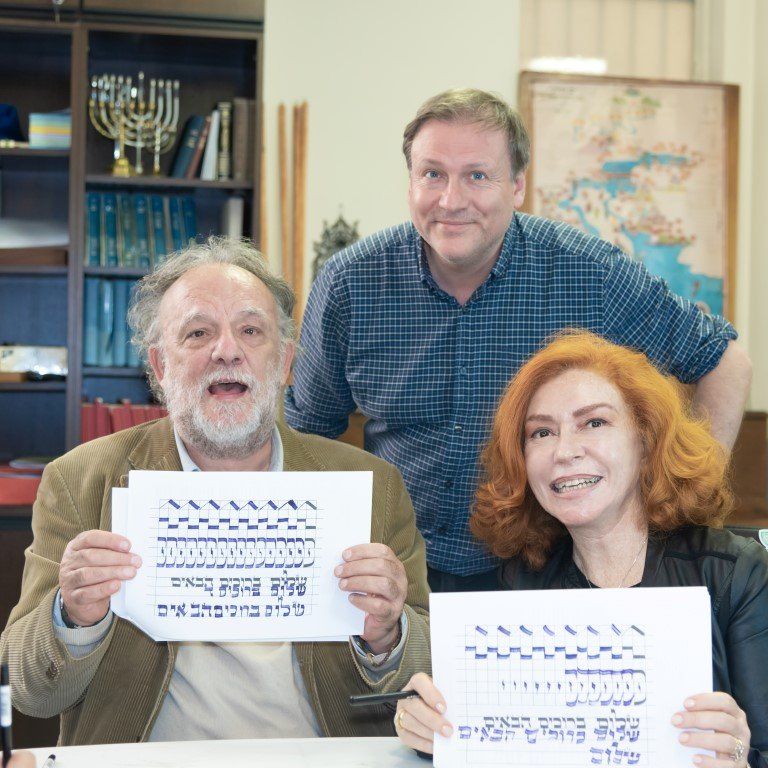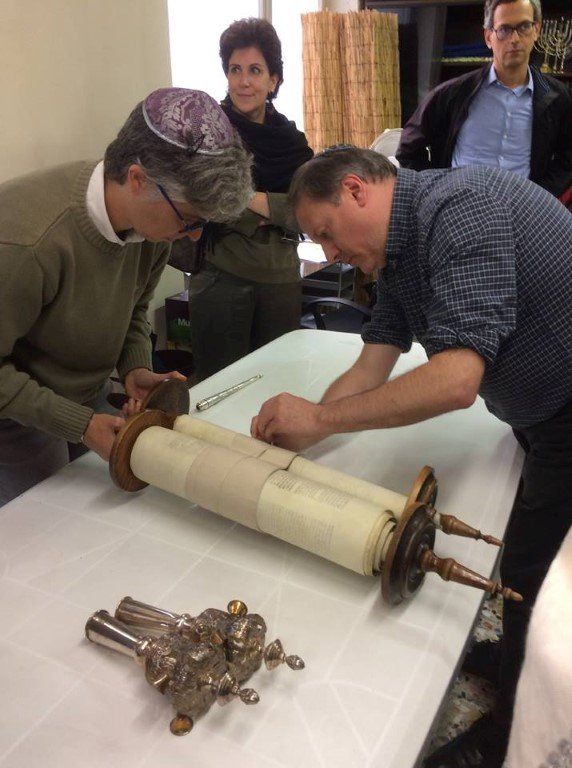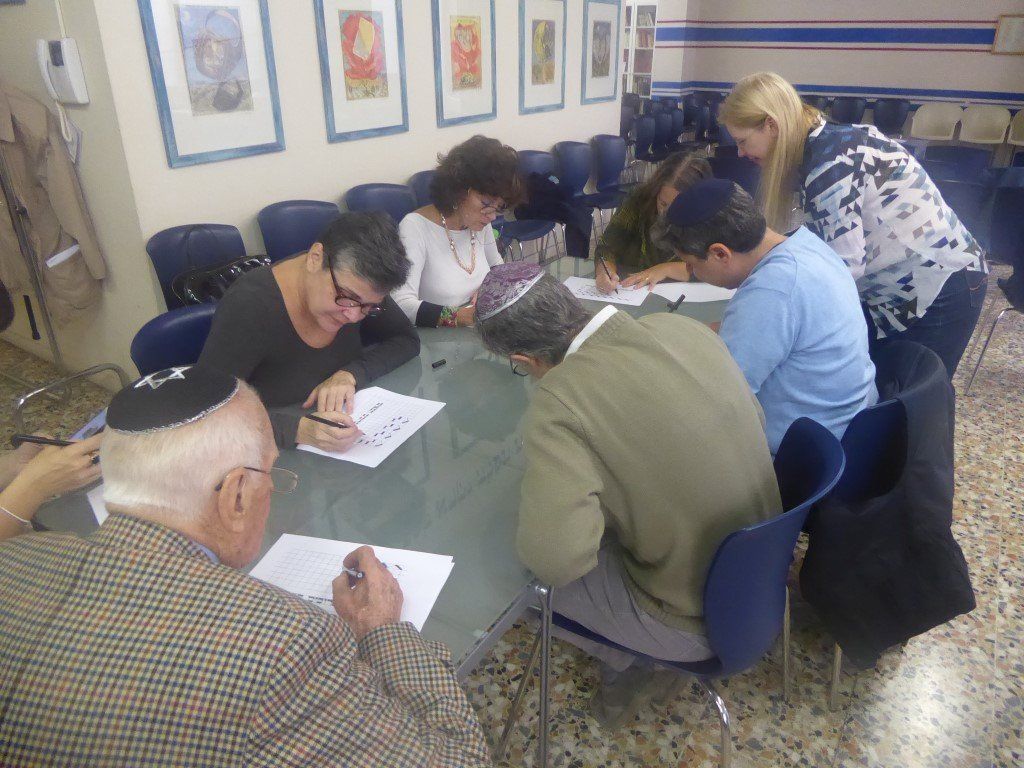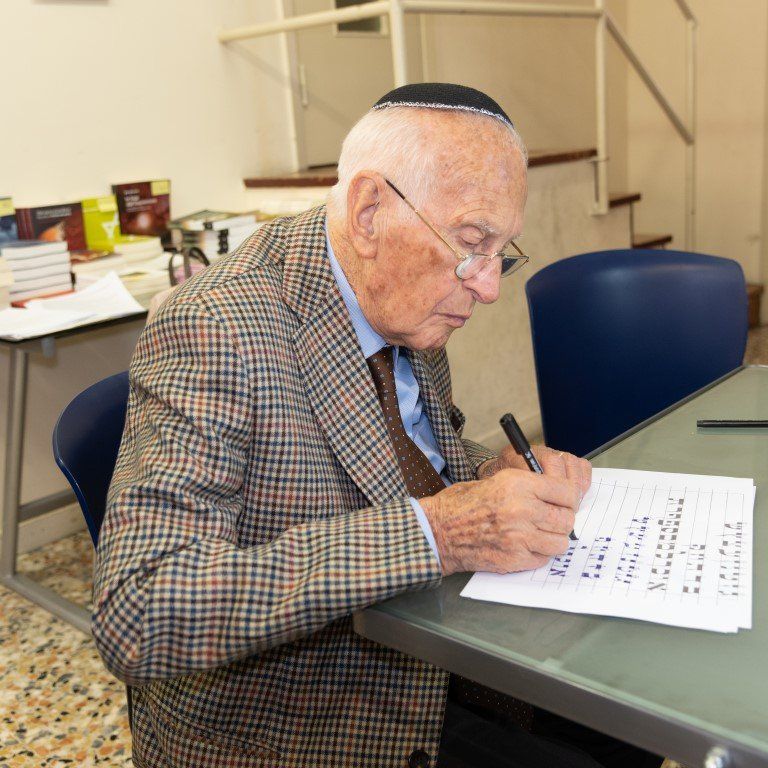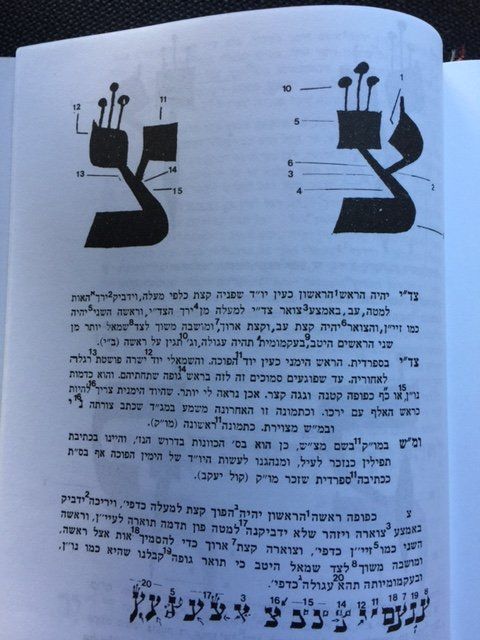Before you get too excited - this diary isn't about a heist. But the movie does get a reference in the last line of this article.
Instead it's about a really nice visit to the lovely community of
Lev Chadash
in Milan. At the invitation of Rabbi Sylvia Rothschild, there followed a packed weekend including checking one of their
Sifrey Torah, a community
Bar Mistvah
and participating in their scribal themed adult study day.
The first task was to check through their second
Torah. The scroll itself was number
144
from the special Czech Memorial Scrolls, rescued from the Nazis and on permanent loan from the Memorial Scrolls Trust housed in Westminster Synagogue. The first order of the day was to confirm that it was indeed the scroll as the plaque that marks it out had gone missing. But the two tiny screw holes in the disc of one of the
atsey
chayim
(handles) confirmed this.
Moreover the scroll employed loop stitching rather than the blind stitching in use since the 1800s and had an irregular
tikkun
- not following today's standard
vavey ha-amudim. The writing was
Beyt Yosef
with a rounded
shin
so an older
Ashkenazi
hand (modern letters
shin
come to a point). Probably a Bohemian hand, but unfortunately no information as to its place of origin has been preserved.
The sad thing, however, is that the
Torah
is very damaged. Indeed large slabs of writing had simply lifted off from columns throughout
B'reshit
and part way into
Sh'mot. The middle section is faded but largely okay but the latter half of
D'varim
sees the massive ink lifting so common the first part return.
Some of the worst damage I'd ever seen, no doubt caused by the poor conditions in which the scroll was kept during the war.
As usual I recorded all the damage column by column, taking photos and reporting on what would be needed to restore it - a massive task that may not be feasible.
Indeed many Czech Scrolls are used in synagogues through the word as exhibits and memorials to the community from which they came as opposed to being used in the synagogue for public reading. And whilst the normal fate of a
pasul Torah
that is not economic to repair is either
G'nizah
(storage) or burial, these
Sifrey
are NEVER buried (it is against the rules of the loan) and are not stored away, as a condition of their loan is that they are to be visible and a reminder of the communities that perished. These
Sifrey
are also often very special with additional
scribal oddities
and variant layouts and having historical significance solely as old manuscripts over and above their holiness as copies of the sacred text.
Below: Some images showing examples of the extensive damage to the
Torah
. Photos © Mordechai Pinchas and Avielah Barclay.

